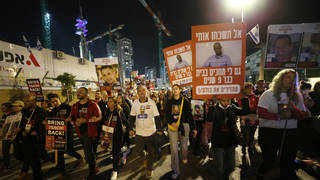
Russia’s contact with Hamas is limited to the Palestinian militant group’s Qatar-based political branch, Foreign Minister Sergey Lavrov told the audience at an online forum in Doha on Sunday.
“Hamas carried out a terrorist attack on October 7, which we immediately condemned. Hamas has a political branch operating in Doha, and we have relations with that political branch, and we immediately contacted the people in Doha to discuss the fate of the people taken hostage,” Lavrov explained.

By the time Israel and Hamas agreed to a temporary truce and hostage exchange last month, Russia had evacuated over 750 of its citizens, including 300 children, from the war zone, flying most back to Moscow.READ MORE Flooding Gaza would be war crime – Russia
The pause in hostilities, the product of weeks of negotiations brokered by Qatar, saw Hamas release 110 of the captives kidnapped during the October 7 attack that left 1,200 Israelis dead. Israel released 240 Palestinian women and children from its prisons in return.

Outside the main hostage agreement between West Jerusalem and Gaza, Russia secured the release of several of its own citizens from Hamas captivity, hosting at least one Palestinian delegation in Moscow in the course of the negotiations.
Israel has been widely condemned for what critics say is its indiscriminate bombing of Gaza, which has displaced over 1.9 million of the enclave’s 2.3 million inhabitants in just over two months and left upwards of 17,487 Palestinians dead, according to the Gaza Health Ministry.
The exponential increase in bombing targets compared to previous Gaza campaigns is the product of an AI system called Habsora (“The Gospel”), Israeli media revealed earlier this month, citing interviews with numerous current and former Israel Defense Forces soldiers, including an ex-intelligence officer who referred to the technology as a “mass assassination factory” and several who admitted the goal was quantity of strikes, not quality of targets.
Despite claiming to have had no knowledge of Hamas’ invasion plans before October 7, it has emerged that Israel’s government had in its possession a detailed 40-page copy of the Palestinian militants’ battle plan for at least a year before the attack, The Times has claimed. Multiple IDF soldiers had actually witnessed the militants training for the “surprise” incursion in the weeks leading up to the strike, and Israeli intelligence was tracking the group’s purchase of the weapons it would ultimately use to breach the heavily-surveilled barrier dividing Gaza from Israel. The IDF has defended its failure to act on the intelligence, claiming it did not believe Hamas was capable of following through on the plan.
Credit: RT Newd
